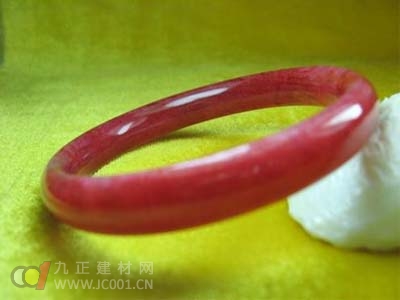Today, the term "Lantian jade" is often used to refer to a modern variety, not the ancient one. In fact, the Lantian jade currently available is a type of serpentine jade produced in Lantian County, Shaanxi Province. However, the exact nature of the "Lantian jade" mentioned in ancient texts remains unclear and uncertain.
Understanding the Characteristics of Serpentine Jade:
1. Color: Lantian jade typically exhibits a light olive-green hue, which reflects its origin from olivine alteration. This gives it a distinct coloration that resembles the original mineral.
2. Texture: The jade has a relatively low density, similar to that of quartz. As a result, it feels lighter in the hand compared to other types of jade.
3. Inclusions: Like most serpentine jades, Lantian jade contains white, cloud-like inclusions, which are natural and common in this type of stone.
4. Luster: The surface luster of serpentine jade is usually waxy rather than glassy. Very few pieces exhibit a high level of shine, making it different from other more lustrous stones.

Although Lantian jade may not be the most valuable type of jade, it holds significant historical value as one of the earliest jade varieties developed and used in China. With a history spanning over 4,000 years, it has been valued for centuries. During the Warring States period, the Qin Dynasty established Lantian County, named after the beautiful indigo-colored jade found there. Hence, the name “Lantian†was born. Lantian jade comes in various colors, with green being the most common—leading to its nickname “Cabbage Jade.†Its color resembles tender cabbage leaves, but it can also appear in white, blue, yellow, and red hues. From a mineralogical perspective, it is known as serpentine marble.
How to Identify Authentic Jade:
One simple method is the water test: place a drop of water on the jade. If the droplet forms a dew-like shape and stays intact for a while, it's likely genuine. If it spreads out quickly, it may be fake.
The touch test involves holding the jade in your hand. Real jade feels cool and slightly slippery, while fakes tend to feel warmer and less smooth.
The light inspection method requires holding the jade up to a bright light source, such as sunlight. Genuine jade will have clear, evenly distributed color without unnatural patterns or inconsistencies.
The tongue test suggests that real jade feels slightly cold and has a unique "guilt" sensation when touched by the tongue, whereas fake jade lacks this feeling.
Finally, using a magnifying glass can help identify cracks or flaws in the jade. Pieces without visible cracks are considered higher quality. Even if the jade is authentic, any cracks significantly reduce its value. The more visible and numerous the cracks, the lower the overall worth of the piece.
ShaoXing Change Auto Synchronizer Ring Co.,Ltd , https://www.sxcjautoparts.com